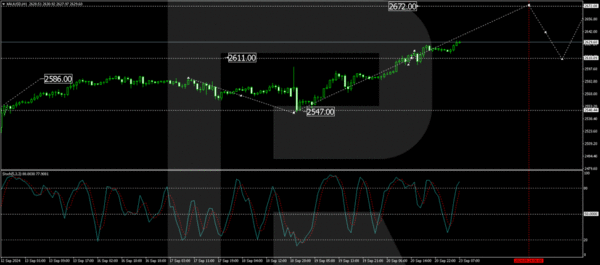Gold prices soared to a new all-time high, with the troy ounce surpassing 2614 USD. This surge is primarily driven by expectations of additional interest rate cuts and ongoing geopolitical tensions, which enhance gold’s appeal as a safe-haven asset.
Following the US Federal Reserve’s decision last week to reduce its interest rate by 50 basis points – the first such cut in four years – the market expects an equivalent reduction by the year’s end. This week, attention is focused on upcoming US macroeconomic releases, including the Core PCE report and personal income and expenditures data. These indicators will provide insights into the potential direction of future Fed rate adjustments.
Gold becomes increasingly attractive as an investment during periods of lower lending costs, which typically lead to reduced yields on government bonds and a lower Dollar Index (DXY). Unlike other assets, gold does not generate coupon income, making it more appealing when other yields decline.
Additionally, the escalation of hostilities between Israel and Gaza has further boosted demand for gold. In times of heightened global uncertainty and conflict, gold traditionally performs well as a defensive investment.
Despite some strengthening of the US dollar, this has not significantly impacted the upward trajectory of gold prices.
Technical analysis of gold (XAU/USD)
Gold has broken through the resistance at 2611.00 USD and is now targeting 2672.00 USD. Upon reaching this level, a corrective movement back to 2611.00 USD may occur, followed by another growth phase targeting 2750.00 USD. The MACD indicator supports this bullish outlook, with the signal line well above zero and ascending sharply.
The H1 chart shows that gold has reached 2611.00 USD and is now consolidating around this level. The consolidation range is defined between 2603.00 USD and 2625.25 USD. A breakout above 2625.25 USD would likely lead to a continuation of the upward momentum towards 2672.00 USD, confirming the ongoing bullish trend. This scenario is corroborated by the Stochastic oscillator, with its signal line progressing towards 80, indicating sustained upward momentum.














